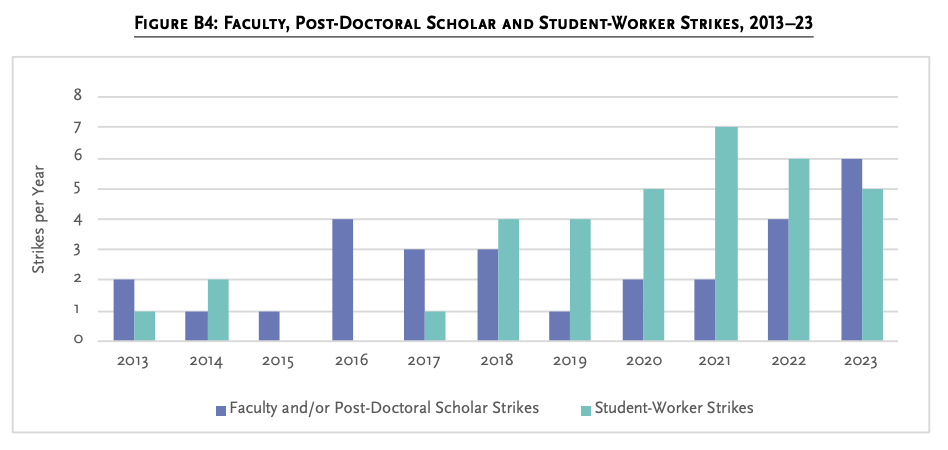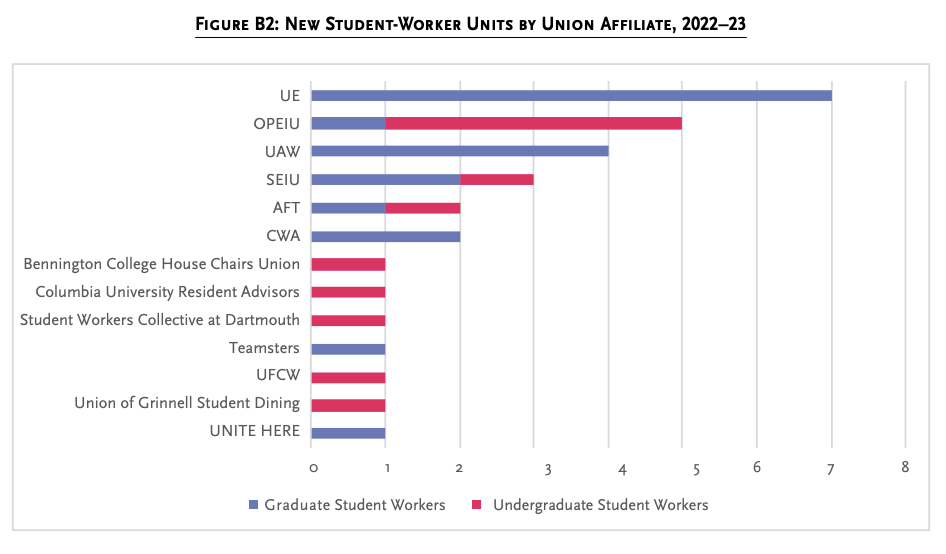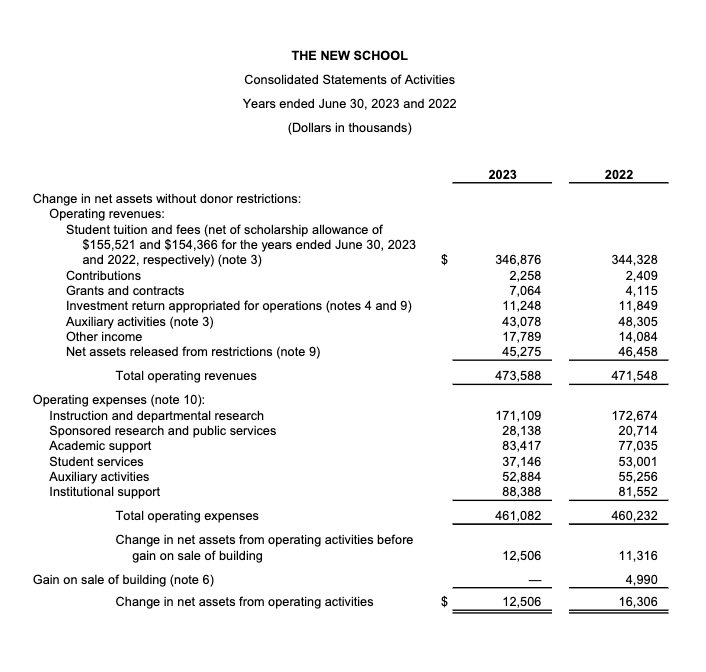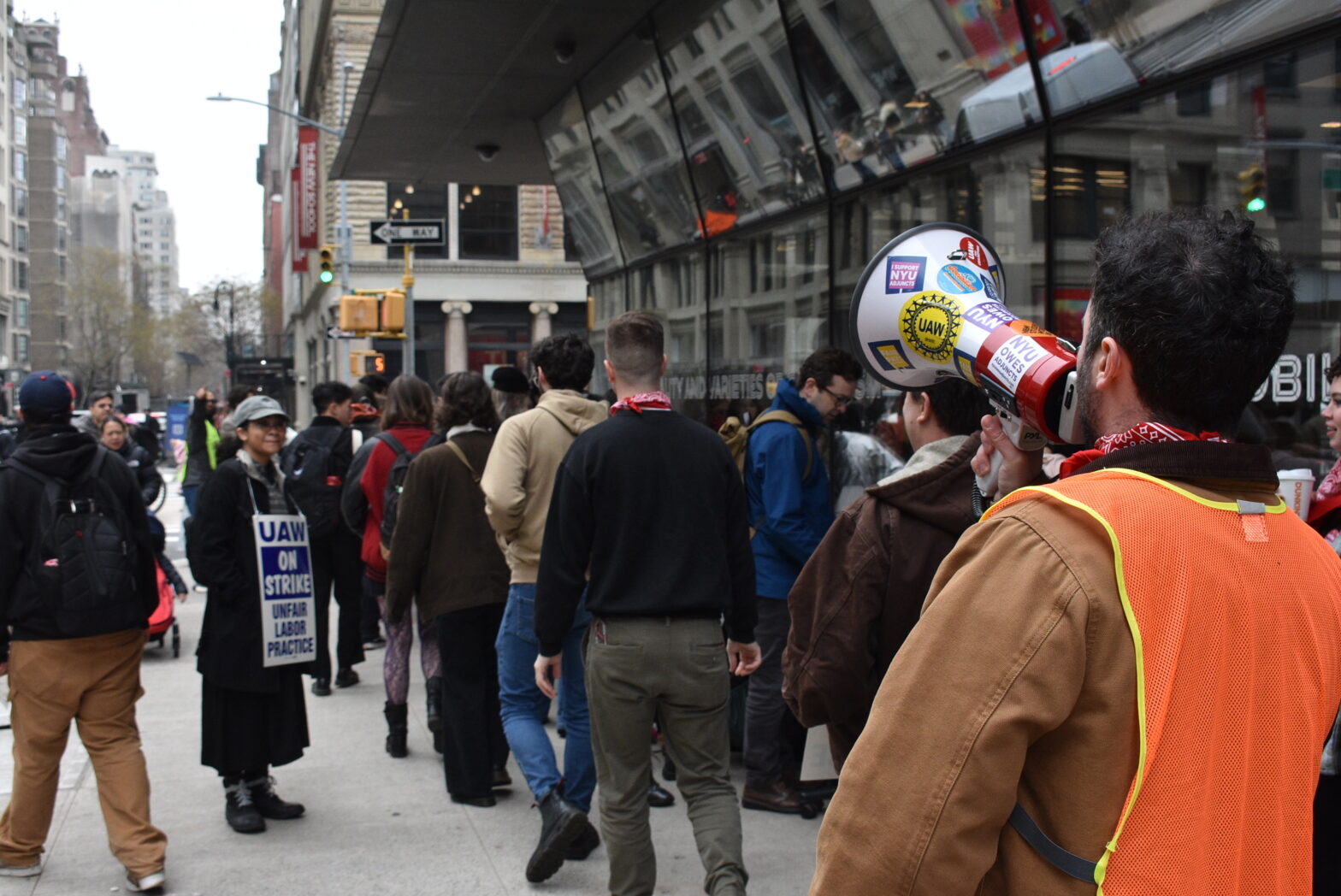After the SENS bargaining committee signed its tentative agreement with The New School this March, champagne rained as picketers dispersed, and the second strike in as many academic years came to a close. The union and its supporters celebrated the moment, but many New School community members remained perplexed by the question: how did we get here again?
The New School’s mission touts a commitment to social engagement and a goal to educate students who will become “critically engaged citizens, dedicated to solving problems and contributing to the public good.” Yet, for the past few years, students’ social engagement has targeted university leadership, and a repeated topic of contention is labor.
Strikes and rates of unionization are increasing, especially among workers at colleges and universities. During March’s contract negotiations, economic proposals from the union were among the most important to members, leading students to request more financial transparency from the university.

The school’s adopted budget for fiscal year 2024 showed a $52.2 million deficit, according to a university spokesperson, largely due to dorm renovations, tuition freezes from the part-time faculty strike, and added investment funds. The scale of the deficit projection was increased later to $57 Million, but the most recent projections show the university is set to break even this fiscal year.
Despite there being no public financial statement yet from the New School for fiscal year 2024, those interested are able to see past years’ Annual Reports. Based on the 2023 reports, there was no deficit last fiscal year, according to Sanjay Reddy, Chair of the New School for Social Research Economics Department.
Even so, the university’s economic strife and higher wage proposals from campus unions have resulted in numerous lengthy contract negotiations between The New School and the collective bargaining units which represent its employees.
Over the past six years, ACT-UAW Local 7902 has carried out three strikes against the university, two for the SENS unit of academic student workers in 2018 and 2024, and one for part-time faculty in 2022.
UAW Local 7902 President Zoe Carey said employees need to continually pressure the university to be heard. “The message that they’re sending time and again in negotiations is that unless you threaten to shut the university down, you’re not getting anything.”
The New School declined a request for an interview with Human Resources Vice President Sonya Williams.

In addition to the strikes, the union and university avoided a student health worker strike in Dec. 2023 by reaching an agreement hours before the strike deadline. In 2018, after the university announced the layoffs of cafeteria workers represented by Unite Here! Local 100, in favor of hiring non-unionized workers, students also occupied the school cafeteria to support the unionized cafeteria staff.
As a result of these past and ongoing labor disputes, frustration is mounting among New School community members. But this frustration is not new. After layoffs of 122 employees in 2020, the rift between the TNS community and its Board of Trustees has continued to grow.
Students and teachers held demonstrations to show dissatisfaction with the university’s austerity measures, which are documented in the research of Sanjay Reddy, from the Economics Department of NSSR. His 2020 findings challenge claims by the university that the school’s 2020 financial crises left the administration with no choice but layoffs and other budget-cutting measures. His study examines the history of the school’s finances and offers alternate paths toward expense decreases, such as strategic reorganization.
“There was no framework of accountability within the university that was adequately functioning in this respect, creating a kind of a license for the top administration to do it as it wished,” Reddy said.
He continued that he engaged in the research from a place of duty and dissatisfaction, describing that he noticed a lack of evidence and data-based justification for financial decisions made by the university in 2020.
Reddy — who holds a PhD in Economics from Harvard and has authored numerous books and articles on economics, inequality, international trade, and labor standards, among several adjacent topics — cited the New School’s latest Annual Report, “In the last two years, fiscal year 2023 ending on June 30, 2023, and also fiscal year 2022, which ended on June 30, 2022, there was actually a slight surplus, not a deficit.”

“You wouldn’t know that from the way in which some people in the New School talk about the situation,” he added.
The New School is not alone in the labor contention. Within the broader landscape of universities, rates of unionization among student workers increased after the pandemic, with graduate student workers accounting for 93% of workers in these new units. Rates of union membership among faculty members also increased but at a lower rate than among student workers, according to “State of the Unions,” a yearly academic overview of union organizations across the U.S..
Not only were more university workers unionized in the last two years, but the last three years have seen more collective bargaining unit strikes than in the previous decade.
“Labor activism has increased in the past few years among highly educated young workers, frustrated by poor pay and precarious employment,” said “State of the Unions” co-researcher Ruth Milkman of the CUNY School of Labor and Urban Studies, in a Roosevelt House article about her Aug. 2023 study.
AAUP officer and Eugene Lang College of Liberal Arts Department of History professor Jeremy Varon hopes the recent SENS strike and labor conflicts at the university can shine a light on the broader context of labor in higher education.
“The issues and problems far transcend The New School, and I think it’s to the tremendous credit of faculty, staff, and students at the New School that they’re aware of and concerned about this larger picture that points towards big structural inequities in American society,” he said.
Ackerman LLP, the firm that represented The New School in the 2022 part-time faculty and 2023 healthcare employees contract negotiations, addressed universities in light of the recent unionization wave. According to their website, Ackerman defends “companies of all sizes, from multinational Fortune 500 corporations to tech startups and everything in between.”
The message was co-written by the university’s former lead negotiator, Genaira Tyce, who said that recent case decisions by the National Labor Relations Board (NLRB) may be expanding student rights to invoke the protections of the National Labor Relations Act (NLRA). The piece describes changes in case law regarding student action and organizing activity around political issues, and the protections students can claim under the NLRA.
The university said they work with a range of outside groups to assist their relationship with on-campus unions, but did not specifically identify the groups.
Sanjay Reddy of the Economics Department said that the university should examine the risks and opportunities it holds as a progressive institution. He said that any institutional approach of cutting labor costs to minimize expenses clashes with the union’s goal of appearing to be a strong advocate for workers. He said this leads to an antagonistic relationship. “I don’t know if that’s always helpful in the university space, where there is also something of a cooperative endeavor, which should be present between all concerned.”
One word that often comes up when describing the university’s approach to handling union activity and the current budget deficit, is “austerity.” In response, Reddy said, “to the extent that they’re saying that there is an austerity regime, or an implementation of austerity…that’s unnecessary because the situation is not quite as dire as that.”
“I think that the problem is not austerity as such, but it’s a certain failure to have a strategic orientation and a capture of the organization by agendas and interests which are not necessarily those which further the educational mission,” he said.







